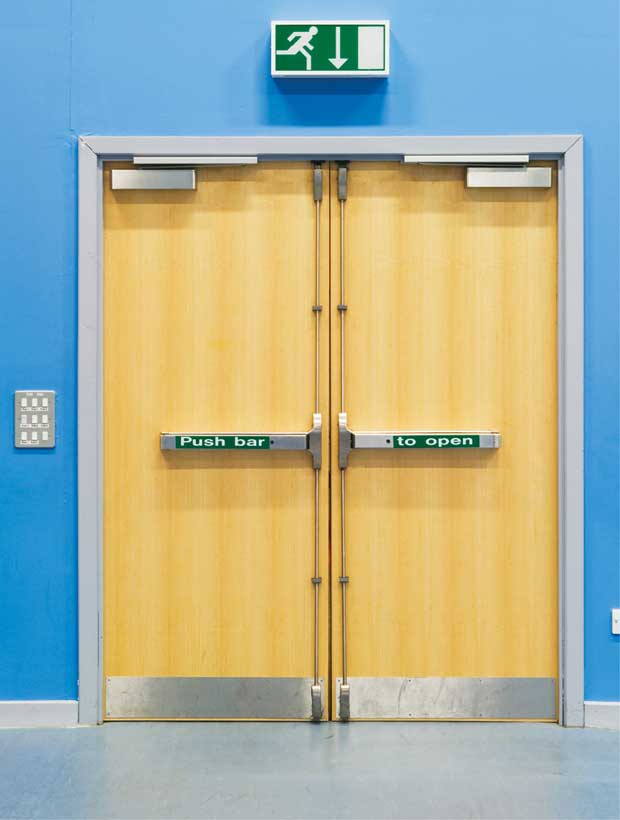 Helen Hewitt, Chief Executive Officer at the British Woodworking Federation discusses how the industry can navigate the shift from the British to European standard for testing fire doors
Helen Hewitt, Chief Executive Officer at the British Woodworking Federation discusses how the industry can navigate the shift from the British to European standard for testing fire doors
Since the Government confirmed that the fire testing standards used for National Classifications will be withdrawn from ‘Approved Document B’ in favour of the EN 13501 series of European classification standards, there has been confusion about the differences between the two systems. Most worryingly however is the misunderstanding that the transition is required because the British Standards are not robust enough – this is incorrect and causing unnecessary concerns regarding fire safety in the construction industry.
While the withdrawal of the National Fire Test Standards for fire resistance will not take place until 2029, it’s important for those specifying, maintaining and responsible for fire doors to fully understand the context of the upcoming change, and have confidence in the products that have been or will be supplied until the change takes place.
UNPACKING THE CHANGES
Many of the changes we’re seeing in fire safety regulations are the result of the Grenfell Tower tragedy, with the recent enquiry putting a much-needed spotlight on fire safety in buildings.
However, the withdrawal of BS 476, the national classification system for fire safety series from Approved Document B is a recognition of a wider ambition by the UK Government to have a single classification system supporting the fire performance of construction products. The Government believes that the withdrawal of BS 476, will result in a clearer, transparent and more effective safety regime.
A major concern highlighted as part of the Grenfell Tower Inquiry focused on the testing and classification system on the reaction to fires because of the way the insulation and rain screen cladding on the outside of the tower were assessed. However, no similar concerns were raised regarding the fire resistance testing and classification of the flat entrance doors, as the existing national classification system for fire resistance does not show similar weaknesses.
The key findings of the Grenfell Tower Fire Inquiry, relating to the flat entrance doors, as stated in the Phase II report were:
- The Tenant Management Organisation (TMO) had not specified the flat entrance doors correctly. They had called for FD30 doorsets not FD30S.
- The fire doors had only been tested for fire resistance and insulation but not smoke control.
- The fire doorsets had only been tested in one direction.
- There were issues relating to the automatic closers that had not been installed correctly and were not repaired.
- The operation of the automatic closers was not sufficiently covered in the fire safety risk assessment.
There were no concerns relating to the fire resistance of the fire doors claiming a national classification FD30 based on testing in according with BS 476-22.
The BWF believes these issues have been mistakenly conflated with broader fire resistance concerns, leading to unwarranted doubts about the reliability and performance of timber fire doors tested under BS 476-22.
The reliability of timber fire doors was in fact proven by a Ministry of Housing, Communities and Local Government (MHCLG) investigation. All the timber fire doors tested passed the 30-minute standard in both directions, and the investigation concluded that timber fire doors perform consistently when tested for fire resistance and pass the 30-minute required standard when manufactured to specification. MHCLG stated their investigation found “no issues with the consistency of fire resistance performance of the doors tested”. Many BWF members who had their fire doors put through the Government commissioned fire-resistant tests, reported exceptional protection that exceeded the 30-minute performance by a significant margin. On average, across the data submitted, fire-resisting time was at 46 minutes, surpassing the 30-minute requirement on average by 16 minutes.





